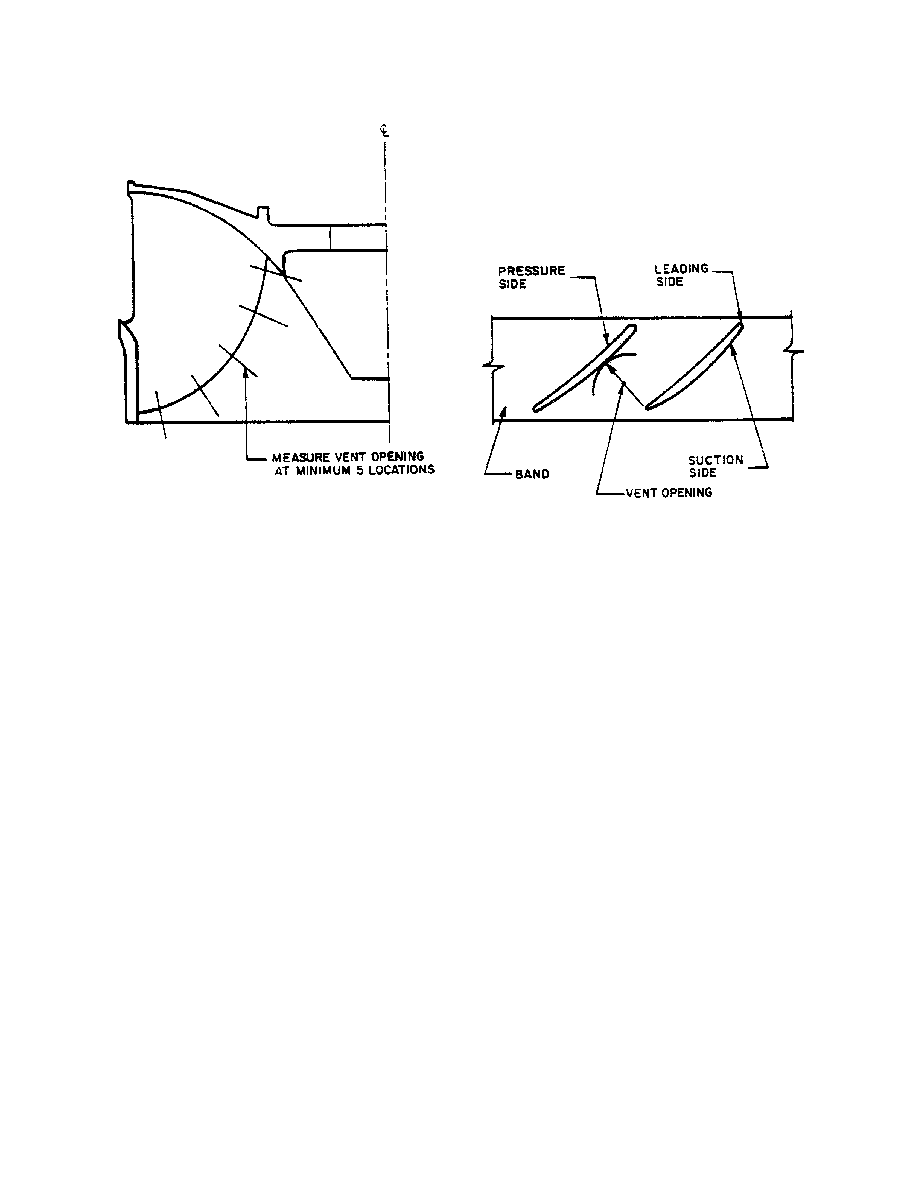

"Preheating. Preheating is recommended under certain circumstances as part
of good welding practice. The purpose of preheating is to prevent hydrogen-
induced cracking; this type of cracking occurs after the weld has cooled and
usually runs from the toe of the weld or from weld defects. Such a crack is
difficult to detect and can be detrimental to the service life of the turbine,
particularly if welds are located in highly stressed areas of the runner. The
increased temperature from preheating increases the diffusion coefficient of
hydrogen and bakes the hydrogen out of the weld. Preheating also allows a
slower cooling rate of the weld preventing excessive loss of ductility in the weld
and the heat-affected zone of the base metal.
of good welding practice. The purpose of preheating is to prevent hydrogen-
induced cracking; this type of cracking occurs after the weld has cooled and
usually runs from the toe of the weld or from weld defects. Such a crack is
difficult to detect and can be detrimental to the service life of the turbine,
particularly if welds are located in highly stressed areas of the runner. The
increased temperature from preheating increases the diffusion coefficient of
hydrogen and bakes the hydrogen out of the weld. Preheating also allows a
slower cooling rate of the weld preventing excessive loss of ductility in the weld
and the heat-affected zone of the base metal.
"The amount of preheat depends on the chemical content of the base material,
the thickness of the base material, the restraint and rigidity of the area being
repaired, the actual heat input during the welding process, and the type of weld
material. Preheat requirements are highly dependent on the extent of carbon in
the base metal. Generally, the higher the carbon content, the lower the critical
cooling rate and the greater the necessity for preheating.
the thickness of the base material, the restraint and rigidity of the area being
repaired, the actual heat input during the welding process, and the type of weld
material. Preheat requirements are highly dependent on the extent of carbon in
the base metal. Generally, the higher the carbon content, the lower the critical
cooling rate and the greater the necessity for preheating.
Carbon Steel Weld Material and Carbon Steel Base Metal. The required
minimum preheat may be determined from the carbon equivalent of the base
material and the thickness of the material. Carbon equivalent is defined as the
following:
minimum preheat may be determined from the carbon equivalent of the base
material and the thickness of the material. Carbon equivalent is defined as the
following:
Ceq = C +
+
+
Mn
6
Cr Mo V
5
+
+
Ni Cu
15
+
where: Ceq = Carbon equivalent - percent
C = Carbon content - percent
Mn = Manganese content - percent
Cr = Chromium content - percent
Mo = Molybdenun content - percent
V = Venadium content - percent
Ni = Nickel content - percent
Cu = Cooper content - percent
Mn = Manganese content - percent
Cr = Chromium content - percent
Mo = Molybdenun content - percent
V = Venadium content - percent
Ni = Nickel content - percent
Cu = Cooper content - percent
"Using this relationship, the required amount of preheat may be estimated from
based on the above formula for carbon equivalent and recommendations of
"Austenitic Stainless Steel Weld Material on Carbon Steel Base Met{~l. The
preheat requirements are less of austenitic stainless steel weld materials
because of the ability of the austenitic material to absorb hydrogen, thus
avoiding underbead cracking.
preheat requirements are less of austenitic stainless steel weld materials
because of the ability of the austenitic material to absorb hydrogen, thus
avoiding underbead cracking.
18